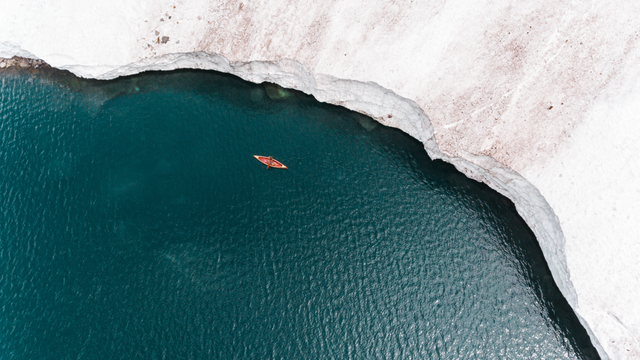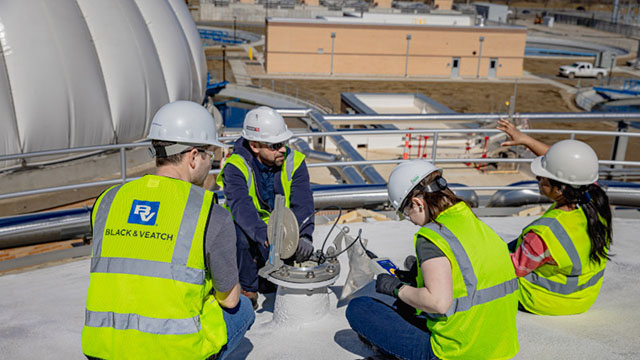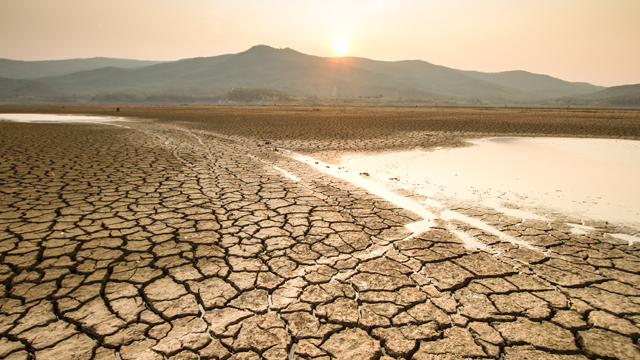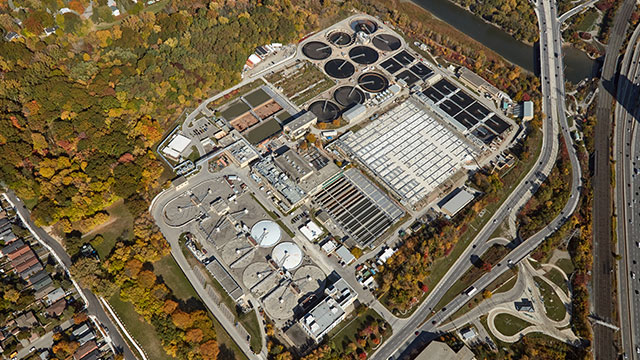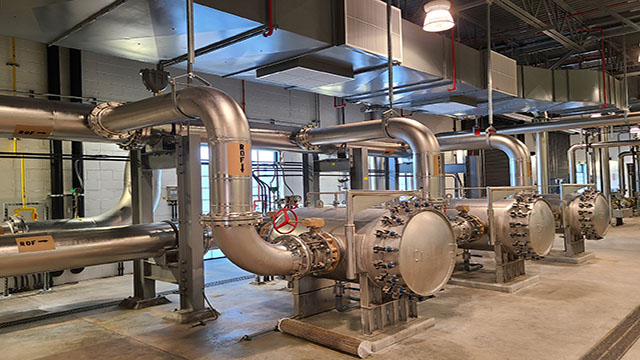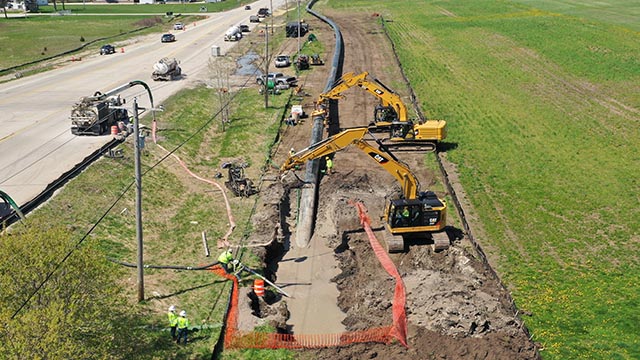When it comes to stormwater management, water utilities and municipalities throughout the United States are looking for solutions to address increasingly extreme weather events, evolving regulatory requirements, workforce development challenges and lack of funding. In response to these challenges, optimizing the operation and maintenance (O&M) of stormwater assets – also known as stormwater best management practices, or BMPs – is essential to protecting infrastructure investments. Effective stormwater BMPs may include regional stormwater capture and treatment systems, trash capture devices, low-flow diversions, dry wells and green streets.
The stormwater management journey is only beginning with the installation of these BMPs; optimized O&M is critical throughout the infrastructure lifecycle, and there are many consequences of failing to properly maintain stormwater management assets. Pools of stagnant water are formed when trash and debris are not frequently removed, and buildup of sediment becomes re-mobilized by subsequent storms – resulting in water quality degradation, flooding, concrete surface failures and even sinkholes. Without regular inspections and maintenance, public agencies aren’t able to proactively mitigate issues, and major repairs quickly become more costly than routine maintenance. Additional consequences include negative public perception and potential barriers to securing future funding.
On the flip side, there is a worthwhile positive outcome - and return on investment - with implementation of a robust stormwater asset O&M program. In a stormwater management “utopia,” maintenance is happening exactly where and when it’s needed – meeting or exceeding the performance goals of the original design. Benefits of optimized O&M include protection of lives and property, flood mitigation, better water quality, resilient water supply, improved system performance, compliance with regulatory requirements, sustainability and even recreational opportunities. To develop a substantial O&M program for BMPs, public agencies should consider taking the following three steps:
Step 1. Plan and Perform O&M
Begin the process by reviewing the overall O&M plan with your personnel, establishing clear expectations and lines of communication. Work as a collaborative team to develop a schedule for regular O&M activities, submitting to regulatory agencies for approval as needed. While planning for O&M, obtain subcontractor costs for any work that can’t be performed directly by your in-house team. Major stormwater asset O&M activities may include regularly scheduled inspections and cleanings, vegetation and site furnishings management, dry well inspections and maintenance, water quality sampling, vactor cleanings, hydrojetting, and immediate post-storm responses. These activities also present numerous opportunities to concurrently perform a safety review.
In this step, accurate monitoring and reporting on asset efficiency and performance will benefit your operations later on from an economic, efficiency and reliability standpoint. When planning and performing below-ground and above-ground maintenance and cleaning, it’s essential to carefully document all data that will help you make educated O&M decisions down the road. Examples of data to collect during O&M include:
Rainfall amounts and intensity
Gate valve setting
Flow volumes (in an out of the BMP)
Influent/effluent analytical results
Water depth in dry wells and/or infiltration structures
Volume of trash and debris removed
Type of debris removed (such as leafy debris, plastics, floatables and foam, and/or sediment)
Condition of assets (including documentation of spalling concrete, rusting and corroding metal, non-functional equipment, dying vegetation, and/or irrigation system faults)
Location information for BMPs with high accumulation rates
Step 2. Analyze Inspection Data
With this critical data collected, agencies now are ready to perform an educated analysis. Gather electronic and analog inspection records and review below-ground and above-ground asset information. Using digital tools, compare temporal variations to cleaning and maintenance information. Evaluate influent flows, analytical results, dry well water levels, rainfall amounts, and compare debris removal rates to historic storm event data. Look for correlations between storm data and maintenance data and consider answers to the following questions, adjusting accordingly:
Did removal of certain constituents increase or decrease after storm events?
Did the size of the storm matter?
How do these changes express themselves across your region?
With this data, stormwater assets also can be ranked by pollutants removed (typically measured in kilograms per year). At this stage, the proactive identification of defects (and associated repairs) is especially key to mitigating disruptions to your operations – in turn, reducing long-term capital spending. In the next step, consider how to use this analysis to further assess maintenance process optimizations.
Step 3. Optimize O&M Frequency
After inspections have been performed and the resulting data has been analyzed, it’s time to optimize O&M. Based on the performance data and identified issues, determine an amended maintenance schedule that works for your unique operations; it’s possible that the maintenance requires adjustments to more (or less) frequent intervals. Some assets may only require annual cleanings, but others may need cleanings after every storm event; some assets may require larger cleaning equipment or confined space entries for routine maintenance. Mechanical functions, such as slide gates, also can be optimized; the opening size can be adjusted based on storm event predictions, stormwater infiltrated between storms, and maximized dry well performance.
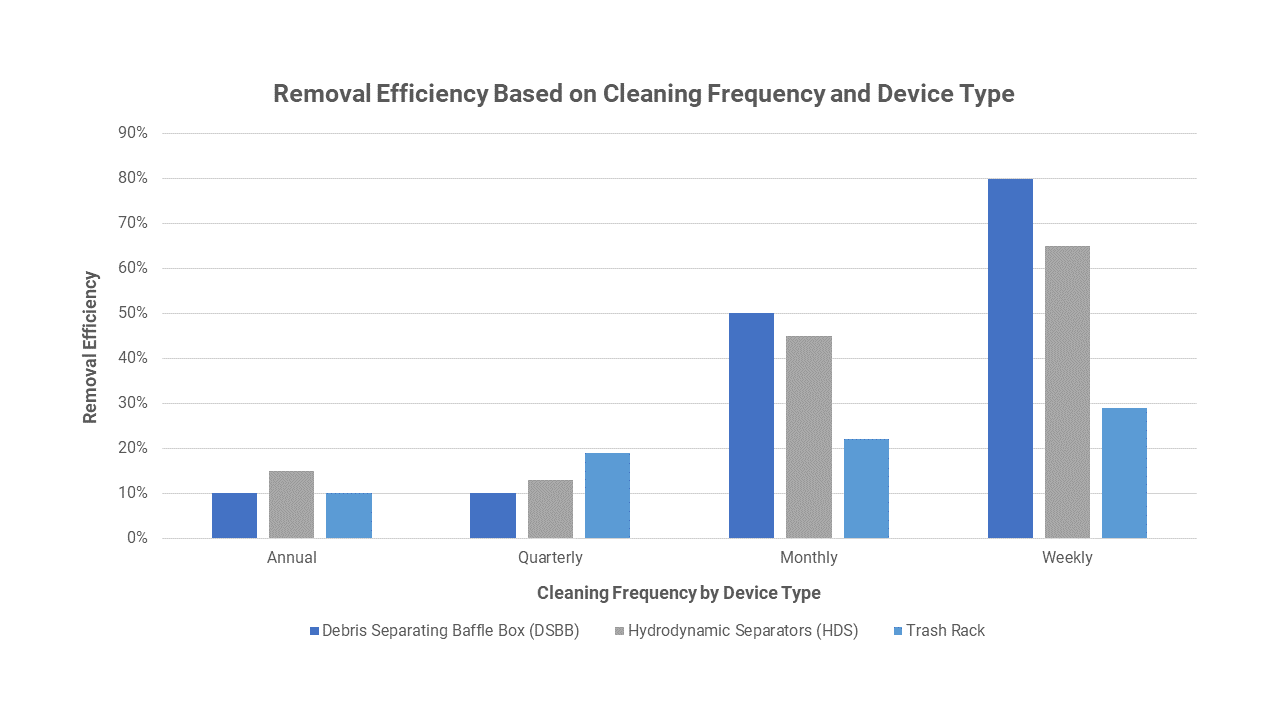
The bottom line: with the data collected, analyzed and optimized, bypasses and overflows are reduced, downstream flows can be better controlled, and treatment BMPs can perform to their full design intent. The goal is to achieve the utopia of “just in time” maintenance; this approach is more efficient for both performance and cost, improves communication among relevant personnel, extends the lifespan of your assets, and enables you to make informed decisions throughout the infrastructure lifecycle.
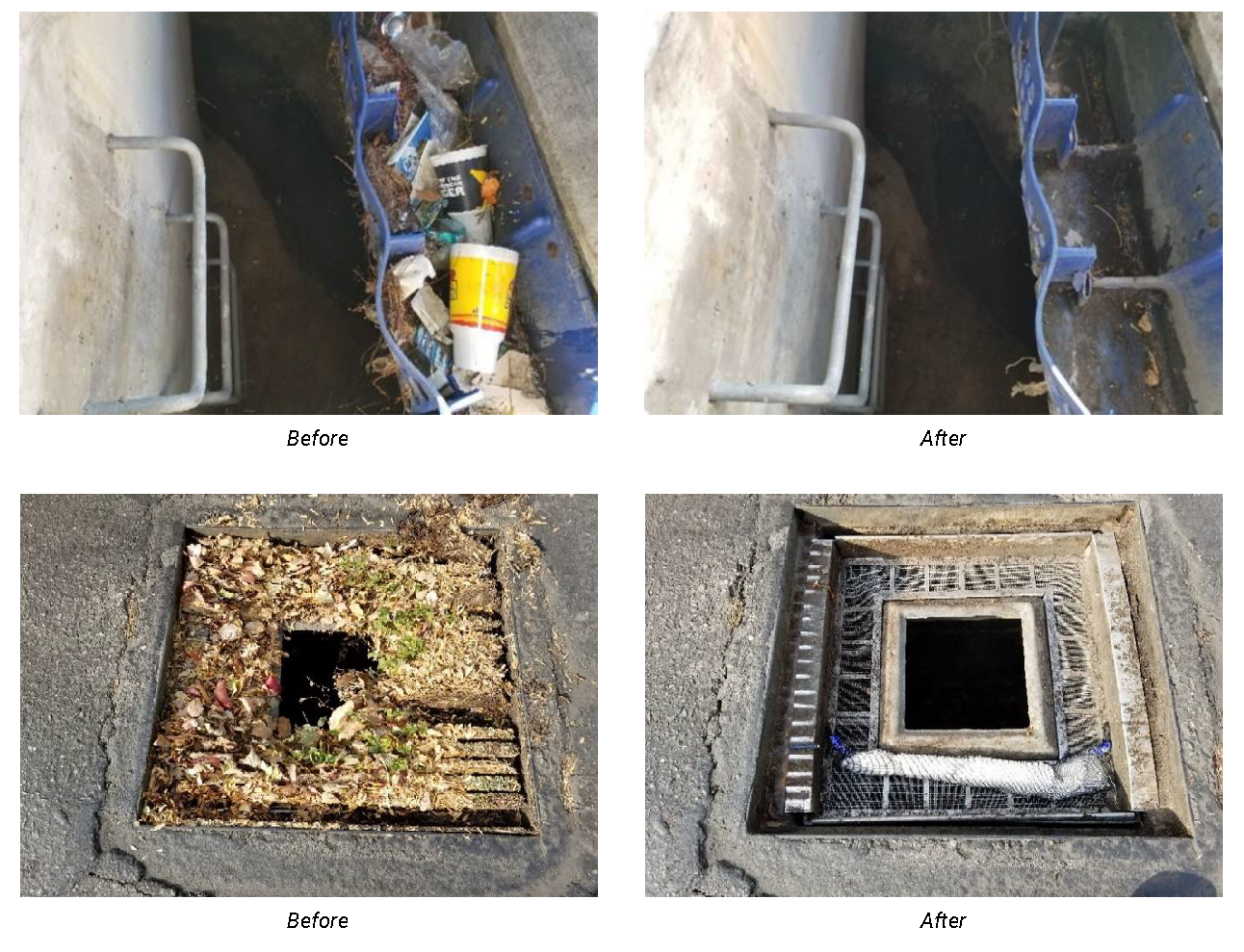
Next Steps: Collaborate with an Expert Advisory Partner to Guide Your O&M Journey
It can be difficult for water utilities to decide which types of BMPs are best for your community, qualify for funding, understand what kind of data needs to be reported to regulatory agencies for stormwater capture credits, decipher complex infrastructure as-builts, and educate existing personnel about how to maintain inconsistent assets. Fortunately, you don’t have to embark on your optimized O&M journey alone. An expert advisory partner (preferably a reputable infrastructure engineering, procurement and construction firm) can take all of the many pieces you’ve already collected and complete the puzzle with a strategic path forward. When seeking the right advisory firm for your organization, consider the following qualifications:
Program Management Expertise. A programmatic approach is ideal, as is choosing the right type of BMP. It’s far less expensive to maintain a network of similar assets, rather than trying to manage unnecessary complexities and nuances of different types of infrastructure.
Emphasis on Continuous Improvement. In addition to facilitating the decision-making process, a good advisory partner can efficiently leverage your current staff (rather than requiring additional headcount) through training, education and relevant certifications. To operate a truly successful maintenance program, it’s essential to employ a safe, engaged, knowledgeable and well-trained staff. Bonus points for building a long-standing training resource library to memorialize institutional knowledge.
Knowledge of Latest Technology. Your advisory partner should maintain expertise in the innovative digital tools and technologies for collecting data in the field and creating customized O&M dashboards. These technologies include (but are not limited to) SCADA, telemetry, GIS and climate modeling – in addition to complex water harvesting treatment systems utilizing ozone, ultraviolet and flocculation processes.
Alternative Funding and Financing Support. A partner with truly comprehensive, turnkey program management expertise also should be able to help you navigate the complex requirements to qualify for grant-funded stormwater management programs.
Black & Veatch’s water portfolio management experts work closely with public agencies to optimize O&M for stormwater assets in creative ways, even offering customized video productions specific to stormwater BMPs that are far more digestible and accessible than traditional O&M manuals. Black & Veatch’s comprehensive stormwater planning and design efforts include green infrastructure, flood control measures, detention basins, tunneling and open channel systems, underground drainage networks and other strategies as appropriate — ensuring clients receive the most value possible from your investments.
Black & Veatch’s stormwater asset management expertise is backed by over 100 years of delivering critical water infrastructure around the world. Contact us to discuss unique solutions for your program.
